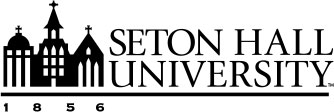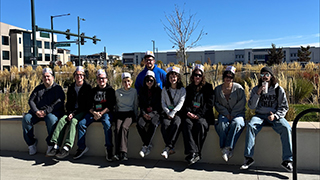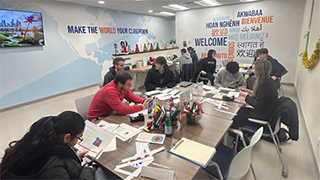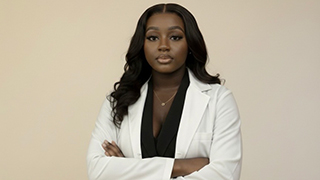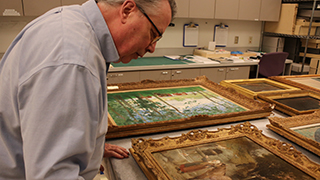Communication Student Shares Thoughts on Book Talk
Tuesday, May 20, 2025

Taj Lanier, Class of 2025
On April 30th, I virtually attended the book talk: Ethics in Contact Rhetoric: Communication and the Dance of Bodies and Power. Jon Radwan, Ph.D., spoke on the theme “How should we draw Communication?” This talk offered
a compelling discussion about how bodies, ethics and power intersect through communication.
The contact team included: Jon Radwan, Dale Cyphert, Ellen Gorsevski and Omar Swartz,
and the presentation emphasized how rhetorical engagement is not just about spoken
or written language but is also embodied and ethical. This shift challenges traditional
thinking of rhetoric by focusing on how power flows through physical presence, emotional
energy and shared performance. One of the standout moments from the talk included
a slide quoting Rudolf Laban, the founding father of modern expressionist dance.
“Every group of people presenting a work together in concerted action is in itself
a living, swinging temple...” This metaphor effectively captured the performative
and temporary nature of rhetorical moments — moments where identity, meaning and power
are dynamically created through shard human action. This aligns with the idea of contact
rhetoric, which understands communication as relational, responsive and grounded in
shared presence, rather than simply persuasive or interactive. Another key point was
a quote rooted in Christian theology that emphasized love and timing in communication
over force or coercion. This view centers ethical communication on presence, care
and restraint, encouraging us to approach each interaction with respect for the other’s
boundaries and agency. It reframes ethical practice in communication not as passive
listening or active talking, but as a dance between both, with ethics emerging in
how we show up with and for others. A significant portion of the talk focused on the
three modes of communication: dissemination, dialogue and contact.
Radwan defined communication as “meaningful giving and receiving,” rooted in the Latin
word munus, which means gift, service, or duty. The Dissemination model, illustrated
by Claude Shannon’s famous mathematical diagram, depicts communication as a linear
transmission of information from sender to receiver, often disrupted by noise. This
model prioritizes efficiency and clarity, but limits human interaction to technical
exchange. However, the Contact model, or Choreutic model, is dynamic, embodied and
mutual. A slide showed two figures reaching toward each other, emphasizing interaction
as a form of movement and presence.
Concepts like “stroke” and “strike” from Berne's transactional analysis were referenced,
seeing communication more like a constant flow rather than just a simple exchange
of information. This model recognizes that meaning emerges not only from content but
also from how people interact in time and space, with bodies, emotions and intentions.
The visuals in the presentation helped bridge theoretical ideas with practice. For
example, the shift from the Shannon model to the choreutic model highlights a move
from unilateral communication to a more dynamic and embodied form of interaction.
It reminded me that communication is never neutral; it is deeply ethical, performative
and dependent on our willingness to be present, to co-create and to listen.
Overall, the presentation offered a great perspective that framed communication not
simply as sending messages, but as a physical, ethical and shared act. It challenged
me to think about how I use my presence and emotional energy in interactions, and
how I might become more aware of the ethical weight of everyday communication. Whether
in classrooms, relationships, or social media platforms, we are always communicating
more than words — we communicate with our whole selves.
Categories: Arts and Culture
